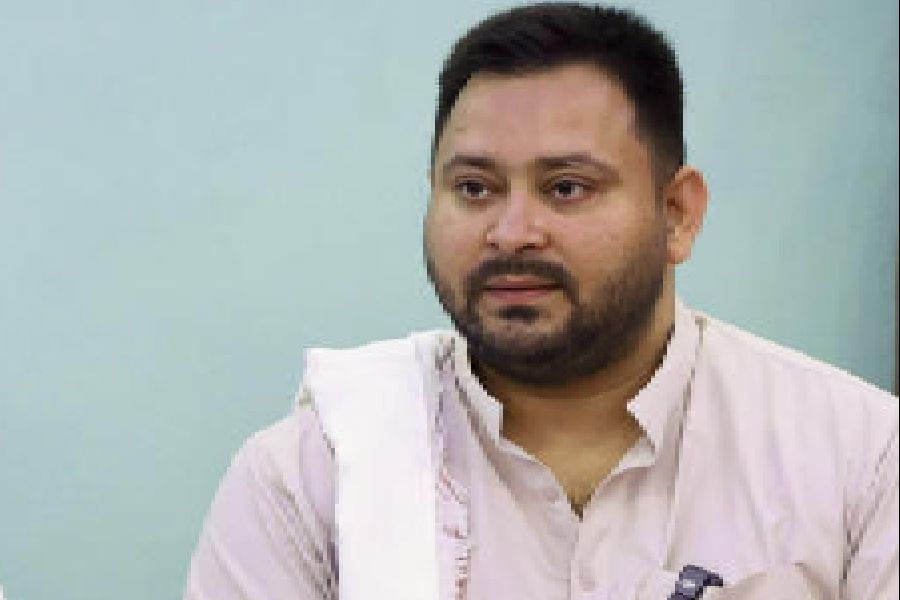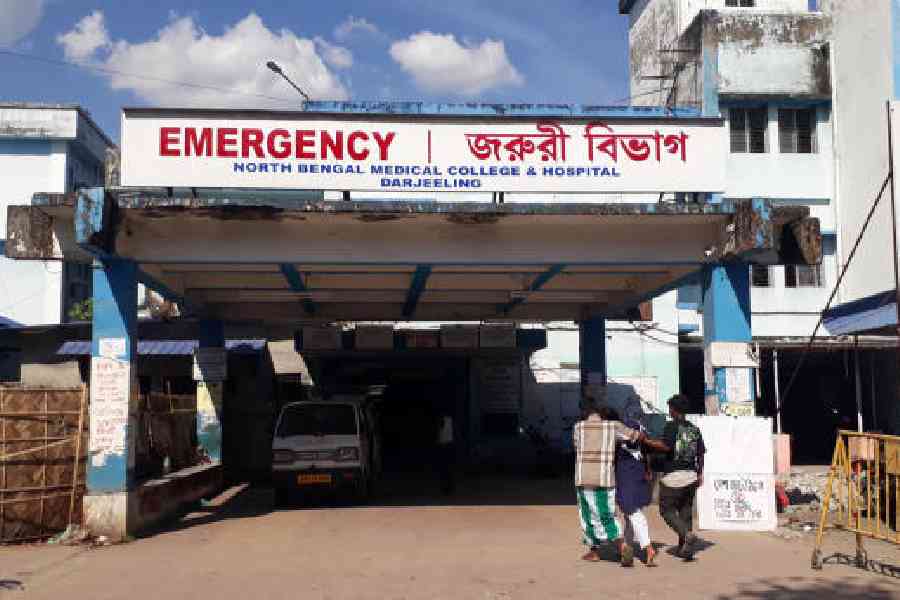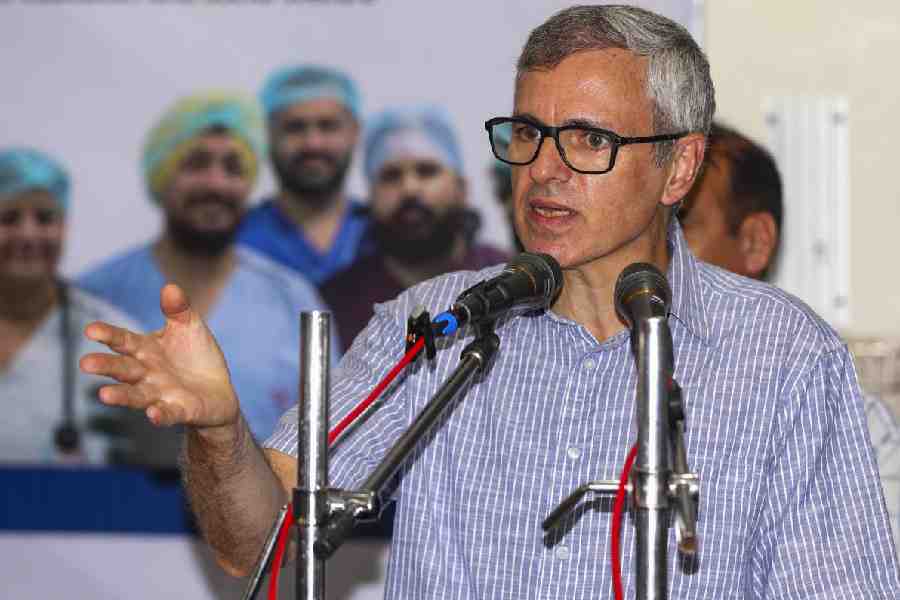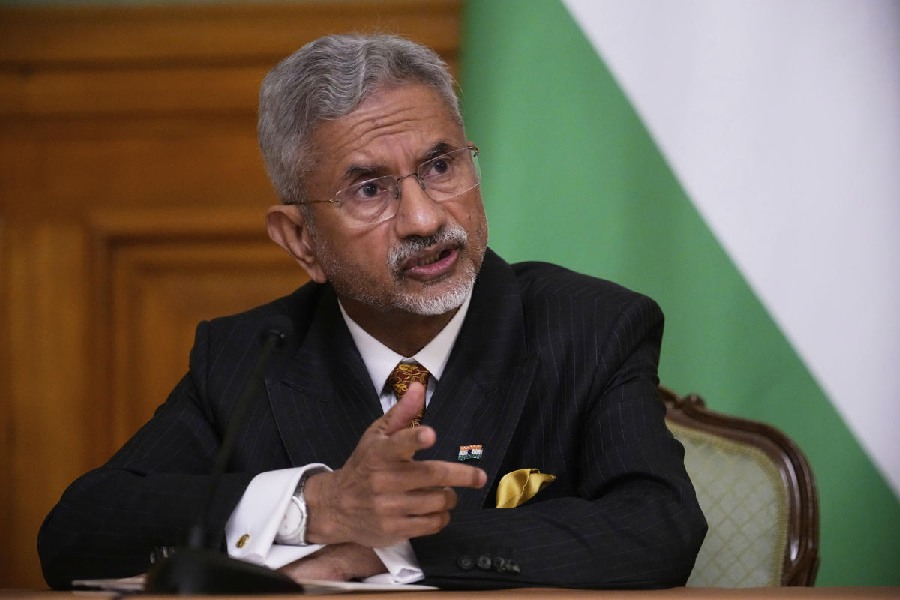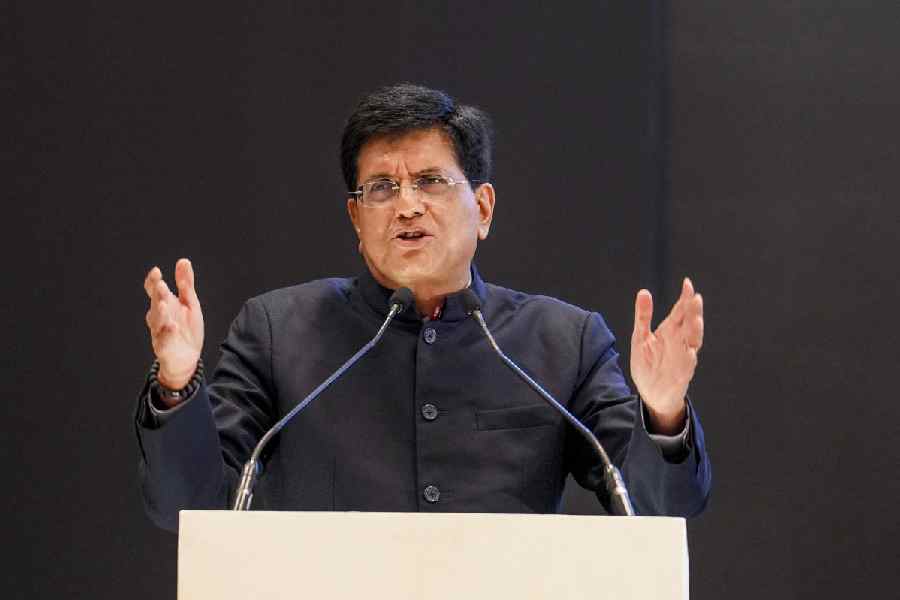flash the right answer
 |
| Students in Nadia’s Dighalgram Netaji Vidyapith High School hold up coded answer sheets in their classroom |
 |
| The web camera installed in the classroom reads every coded sheet and transfers the answers to a laptop for storage |
 |
| The laptop is connected to a screen that displays the students’ answers, allowing instant evaluation of the chidlren’s performance. Pictures by Ranjit Sarkar |
Microsoft has opened yet another window in a school in a remote village in Nadia.
Students answer multiple-choice questions at Dighalgram Netaji Vidyapith High School at Nagarukhra in Nadia’s Haringhata block, in a striking new way. It’s a bit like Kaun Banega Crorepati’s fastest-finger-first round, only easier and far less expensive.
They wave sheets of paper at a camera and the monitor on the teacher’s desk displays their answers. Such question-answer sessions are being increasingly integrated into the class lessons at the school in an attempt to make learning easier and with more fun.
Microsoft’s research team in India developed the students’ response system called “qCard”, which uses an ordinary webcam and symbol-coded sheets of paper to instantly recognise, collect, process and analyse students’ responses to multiple-choice questions very quickly and in an inexpensive way.
The answer sheets that the students hold up are all unique and coded. Each answer sheet has four letters printed in four corners. Each letter stands for an option. A student holds up the corner he thinks has the right option to a multiple-format question. The camera scans the paper and the answer is on display before the teacher.
It leads to an immediate appraisal of each student, says Nilanjan Nath of the Calcutta-based Future Society, a non-profit organisation working to improve the standard of education in unprivileged areas. The society has worked with Microsoft to implement the “qCard” at Dighalgram high school as a pilot project in Bengal.
“This is the pilot project of the qCard system in Bengal,” said Bill Thies, a senior researcher of Microsoft’s research team for ‘Technology for Emerging Market’, which has developed the qCard. This is a landmark success. We will further refine this technology based on the experience of the students and their feedback.”
PricewaterhouseCoopers India Foundation has contributed to the project by donating five laptops to the school.
This is the first formal implementation of the qCard project after a trial in Bangalore. It is being used at Dighalgram school regularly to teach students in Classes VII-X.
Brojen Konar of Future Society, who has been training the teachers at the Nadia school on qCard, elaborated further on how the programme works. Each sheet of paper contains a printed code — the quick reference (QR) code. By holding up different corners of the sheet, the students can answer in four ways to the multiple-choice questions (i.e. A, B, C or D).
When a student waves a sheet at the webcam, the software helps the camera scan the code, recognise it and then aggregate the students’ responses to record the information in the computer in real-time so as to display the answer simultaneously.
Each student is identified by a different card pattern. Since it is his card number that shows up and not his name, it does not lead to an embarrassment if he has not answered correctly, though the teacher easily identifies how each student has responded.
“Microsoft has developed QR codes of different types which can be printed on plain paper and can be photocopied in required numbers to give them to students for their response,” Konar added.
In the usual question hour, students raise their hands to respond to a question. But it could inhibit the timid students. “In the qCard system the test is complete, accurate and reflect their immediate understanding. As the answer of each students is recorded in the database, it becomes easy for a teacher of the concerned subject to assess the progress of the student,” said Konar.
Santanu Mandal, the headmaster of the school, said he was happy with the qCard experiment.
“We are grateful to Future Society for recommending us to Microsoft and implement their qCard technology in our school. It is a landmark success in upgrading the school that is located in a remote rural area of a poor economic zone to bring it at the par with any modern school of urban areas,” he said. “All our students and teachers are computer literate and they face no problem.”
Students Sujoy Mandal, Prahelika Gyne, Taniya Mandal and Sikha Mandal, all of whom study in Class X, were unanimous in their opinion that lessons are more fun now.
“Now we can answer more questions in less time. This system has also made us confident and studying and answering questions are more fun now,” Sujoy said.
The school has several other credits to its name.
Earlier, the school, at Mandal’s initiative, had installed CCTV cameras to monitor lessons in all classes. If a teacher is absent, the headmaster takes classes from his room through video-conferencing.
All students of the school are computer literate.
“Now the qCard will record the progress and achievements of students daily. We have asked the teachers to prepare question banks. The new education guidelines of the government gives emphasis on the multiple-choice question format,” Mandal said.
Swarup Dutta, the spokesperson for Future Society, said: “Feedback is a very important aspect for students. The qCard system can provide feedback in real time.”


